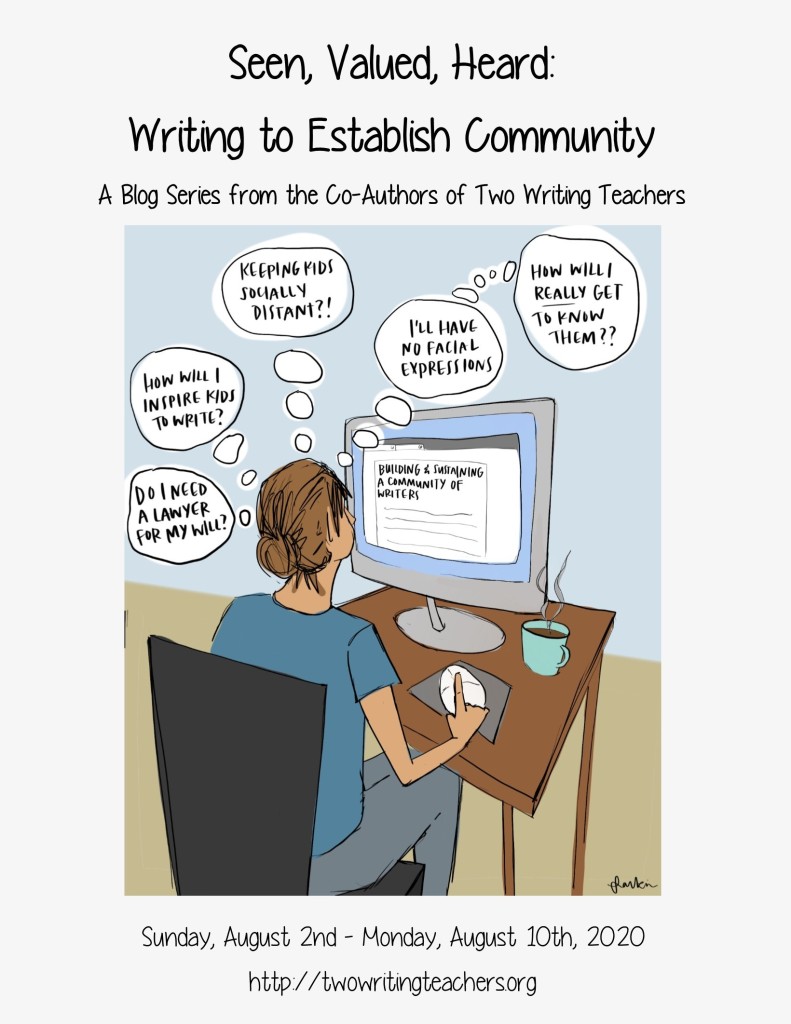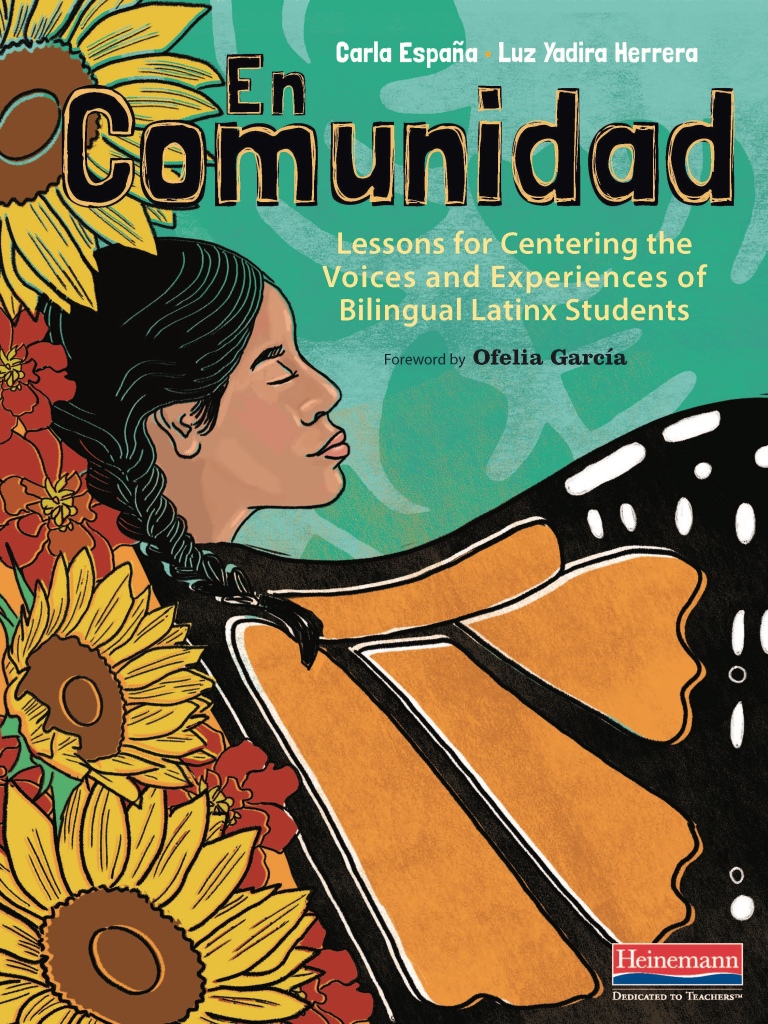
When I have a typical writing conference (i.e., in the non-COVID-19 world), I start out by researching the writer. Next, I decide upon something to teach the student. But before I teach anything, I compliment the child on something they did well or an approximation they’re making as a writer. I’ve learned that noticing what a child does well before teaching them something helps children to be seen, valued, and heard before I try to teach them something new.
If your fall instruction plan includes any kind of virtual teaching, then building and maintaining relationships will be more crucial than ever. In order to engage and motivate students, we must work to genuinely connect with kids (and their caregivers… but that’s another post!) before we focus on academics.
Build Connections Before You Provide Feedback
Balance getting-to-know you activities between the personal and academic. You can Google “student interest inventory” and find lots of pre-existing templates you can use or modify. In an effort to create a writing workshop survey that can work remotely, here’s what I created. (NOTE: This was written with upper elementary students in mind. You may simplify this survey by having students fill in the blanks, use emojis, etc.)

Keep this survey inclusive by doing the following things:
- Record instructions so students can hear you talking about the survey and its purpose.
- Share the survey with students in an accessible font. (Click here to learn more about finding accessible fonts for classroom use.)
- Allow students to type, handwrite, audio record, or video their responses. (Personally, I like Seesaw for this purpose. Other applications you could use are Buncee, Flipgrid, or Padlet.)
- Follow-up with students with written or recorded comments. If time permits, schedule a get-to-know the writer virtual writing conference though Google Meet or Zoom.
Provide Authentic & Meaningful Feedback
Once you’ve spent time getting to know students, it’s time to provide feedback. One of the most common ways you can provide feedback on student writing is through comments on Google Docs. In an effort to save your time and sanity, allow me to share some tips I routinely gave to teachers in the pre-COVID-19 world that will serve you well as you work from home or behind a plexiglass teacher wall in your classroom.
- Select a handful of student writing to read daily. It’s not sustainable to read and comment on every child’s writing daily.
- Read with a lens. It helps to have a handful of things to focus on when you’re reading student writing. Think about specific qualities of writing, the part of the writing process a child is in, etc.
- Provide a genuine and specific compliment that’s a few sentences long. Just as you wouldn’t tell a child “good job” in a writing conference, written feedback should be targeted.
- Teach one thing that will help the child become a dramatically better writer, not just for that piece of writing, but for the future too. Students will be overwhelmed if they have multiple things they need to turn their attention to after you provide them with feedback, especially if they cannot ask immediate follow-up questions. Therefore, select one thing that will help the writer, not the writing, to become better. Be explicit about your teaching. Keep your tip within the child’s Zone of Proximal Development. If possible, share a mentor text with the student so they have an example of what it is you’re asking them to do as a writer.
- Make suggestions, sparingly. It’s tempting to want to swoop in and edit a child’s work especially when you’re in Google Docs. However, this is akin to taking a red pen to a child’s paper. It’s important to walk a fine line between showing students how to do something within their Zone of Proximal Development and demoralizing them. So, if you must make changes, turn on the “suggesting” feature so that your edits become suggestions. Even with the suggesting feature, use it sparingly. You might focus on a conventions goal you may have for a student rather than doing a full edit of the child’s writing, which has little to no effect on a student’s convention usage.
Are you wondering what this looks like when using Google Docs? Watch this screen recording for a peek into how I provided feedback for a third-grade student:
Click here to see the student’s writing.
In-person (i.e., via video chat) feedback is always better than receiving comments in the margin of a document. However, if it’s impossible to schedule a live writing conference with a child, consider making an audio or video recording of yourself and sharing it with the student (e.g., in Screencastify or Seesaw). Hearing your voice and/or seeing your face will help to humanize the feedback.
It’s tempting to jump into a writing curriculum and to provide students with feedback in an online setting, especially if it’s asynchronous. (Go back and check out Lanny Ball’s piece for more ideas on how writing partners can offer meaningful feedback.) However, building a community is the most important thing you can do to help your students be part of a true learning community even when they’re sitting in different places.
GIVEAWAY INFORMATION:
- This giveaway is for a copy of En Comunidad: Lessons for Centering the Voices and Experiences of Bilingual Latinx Students by Carla España and Luz Yadira Herrera. Thanks to Heinemann for donating a copy for one reader. Please note: You must have a U.S.A. mailing address — Sorry, no FPOs — to win a print copy of this book.
- For a chance to win this copy of En Comunidad, please leave a comment about this or any blog post in this blog series by Sunday, August 9th at 6:00 p.m. EDT. Betsy Hubbard will use a random number generator to pick the winner’s commenter number. His/her name will be announced in the ICYMI blog post for this series on Monday, August 10th.
- Please leave a valid e-mail address when you post your comment so Betsy can contact you to obtain your mailing address if you win. From there, our contact at Heinemann will ship the book to you. (NOTE: Your e-mail address will not be published online if you leave it in the e-mail field only.)
- If you are the winner of the book, Betsy will email you with the subject line of TWO WRITING TEACHERS – SEEN, VALUED, HEARD. Please respond to her e-mail with your mailing address within five days of receipt. A new winner will be chosen if a response isn’t received within five days of the giveaway announcement.



Any chance you would share this template?
LikeLike
It’s a free template (from the education section) on Canva.
LikeLike
Yes! This was exactly what I’ve been looking for to support our teachers! Thank you for sharing 😊
LikeLike
Glad it’s helpful!
LikeLike
This piece really reminded me how to focus my writing feedback. Workshop model will look very different this year, but the core of it is vital for the growth and success of my students. Thank you!
LikeLike
Yes, it certainly will look different. However, you are absolutely right… the guiding principles are still the same.
LikeLike
Really enjoying this blog series! This group never disappoints. Thank you!
LikeLike
Aw, thanks for the kind words, Katie!
LikeLike
I would love to win this book. I really enjoy your blog!
LikeLike
Thanks, Amanda.
LikeLike